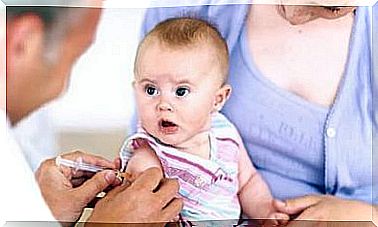Bioactive Peptides From Milk: How Do They Work?

While the nutritional value of milk proteins is very well known, the functional value of bioactive peptides, which derive from the fragmentation of such proteins, is not so well known. However, during the last decade its biological importance has been recognized. In this article we will tell you more about it.
What are bioactive peptides?
To understand the origin of bioactive peptides, we can visualize each protein as a cargo train. In these imaginary trains, the cars correspond to amino acids. Also, in this simile, there are 20 different types of wagons and each train can be as long as necessary. Thus, the number and combination of wagons in each protein is what makes each protein unique.
Following the exercise of imagination, digestion would be the process of disassembling these freight trains. Peptides are the fragments that result from the digestion of proteins. It should be noted that the activity of these peptides is based on their inherent amino acid composition and sequence.
How are bioactive peptides made from milk?
As discussed earlier, peptides are segments that lie inactive (or encrypted) within the original protein sequence. Digestion releases and activates such peptides to perform various functions.

Bioactive peptides are derived from milk proteins and can be generated by both digestive and microbial enzymes. It is interesting to know that breast milk itself contains both components:
- Proteolytic enzymes : the most prominent are pepsin, trypsin, and chymotrypsin.
- A microbial load, which includes a battery of lactobacilli bacteria.
In general, the size of these active sequences can range from 2 to 20 amino acid residues.
Where do they carry out their activity?
Some of the bioactive peptides exert their effects directly on the gastrointestinal lumen. However, others function in the peripheral organs after being absorbed through the intestinal lining. Furthermore, it is now known that it is possible that the same peptide can exert multiple functions.
What functions do bioactive peptides in breast milk perform?
Peptides derived from milk proteins have been shown to exert a number of activities that affect the digestive, endocrine, cardiovascular, immune and nervous systems. Specifically, the health-beneficial effects of bioactive peptides encompass antimicrobial, antioxidant, antithrombotic, antihypertensive, immunomodulatory, and opioid activities, among others.
Immunomodulatory effect
Breastfeeding transmits passive immunity through multiple factors, and the gastrointestinal release of immunostimulatory peptides derived from serum proteins. For example, these peptides released by digestion by the enzyme trypsin:
- Derivatives of β-casein : the hexapeptide of residues 54-59 and the tripeptide of residues 60-62.
- Derivatives of α-lactalbumin: the tripeptide of residues 51-53.
These peptides stimulate the phagocytic activity of human macrophages and stimulate the oxidative explosion carried out by human polymorphonuclear leukocytes when fighting bacteria.
Antioxidant effect
Newborns, especially premature infants, are vulnerable to oxidative stress. In addition, there is a greater susceptibility to oxygen stress in diseases associated with prematurity. Such is the case with necrotizing enterocolitis, chronic lung disease, and retinopathy of prematurity.
Human milk contains many enzymatic and non-enzymatic antioxidants, including superoxide dismutase, glutathione peroxidase, vitamins E and A, and β-carotene. In addition, the peptides generated from the digestion of milk proteins, by the enzyme pepsin, have a powerful antioxidant activity:
- From β-casein: the peptide of 7 residues 154-160 and the peptide of 3 residues of 169-173.
- From κ-casein: the 6-residue peptide from 31–36 and the 6-residue peptide from 53–58.
The proposed antioxidant mechanism of these peptides is mainly through the extinction of free radicals by the amino acid structures of tryptophan and tyrosine residues.

Opioid peptides
Breastfeeding mothers see babies calming down every day after receiving milk. This effect is mainly attributed to the abundance of tryptophan, a precursor to serotonin, in milk proteins.
However, opioid peptides derived from milk proteins also play a role in sleep patterns. Furthermore, these peptides are likely to play a considerable role in the development and function of the gastrointestinal tract in infants.
Opioid peptides act by activating or inhibiting opioid receptors in the central nervous system and peripheral tissues. This includes the gastrointestinal tract or enteric nervous system.
So far, opioid peptides derived from β-casein and α-lactalbumin designated as β-casomorphins and α-lactorfin have been studied in detail.
Opioidergic activity controls gastrointestinal function, that is, digestive motility, electrolyte transport, and fluid secretion. Also, it regulates gastrointestinal development, for example, facilitating the production and secretion of mucin. In addition, these opioids exert analgesic effects and in the induction of sleep and adaptation to stress.
Antimicrobial peptides
Furthermore, an increasing number of bioactive peptides with broad antimicrobial activity derived from lactoferrin have been designated as lactoferricins.









